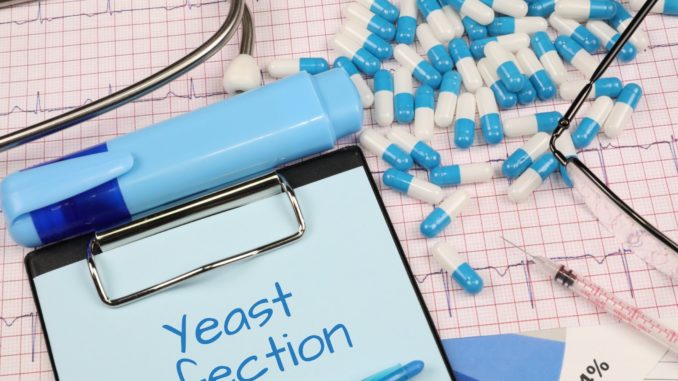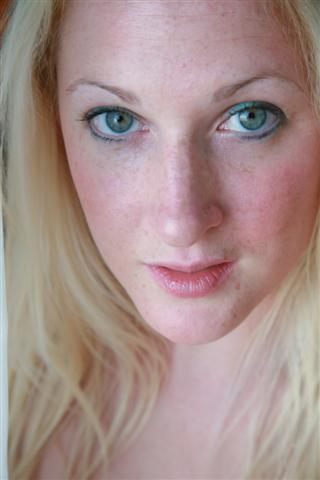
by Dan Jackowiak

Image by Nick Youngson
Different causes and symptoms characterize a yeast infection. It can be mild to chronic depending upon the type of fungus and its pathogenicity. Naturally, yeast lives on the skin and in the body.
However, different factors balance its amount in and on the body. Any disturbance in this balance may cause a yeast infection. This article gives a step-by-step guide on how you can personalize a yeast infection treatment.
What is Yeast Infection?
Yeast is a type of fungus. Most of the time, a yeast infection is caused by a type named Candida Albicans. Candida albicansyeast is found in the mouth, digestive tract, and vagina. A healthy balance of these yeasts and bacteria helps kill harmful organisms inside and outside the body. However, when this balance is disturbed, Candida grows abnormally, leading to yeast infections.
A Candida infection is also named candidiasis. Suppose Candida grows too much in the mouth. In that case, it causes an oral yeast infection, and in the vagina, it causes a vaginal yeast infection. Candida albicans is the leading cause of vaginal yeast infection. Most women will get this infection at some point in their lives.
Treatment of Yeast Infection
Once the presence of yeast infection is confirmed after diagnosis and tests, then treatment of the infection becomes compulsory. Otherwise, it can lead to chronic disease with complex symptoms.
The treatment can be done by using certain antifungal drugs the tests identified as effective agents against the species of yeast that you are infected with. In addition, certain home remedies are also effective in yeast infection treatment.
Medication
Trained healthcare providers often use antifungal medications to treat vaginal yeast infections. These drugs are intended to combat and prevent the growth of infectious yeast in the body. The oral approach and the topical method are the two most prevalent methods for treating vaginal yeast infections.
Medication is administered by mouth in the Oral technique. The topical approach involves applying medicine to the affected region. Medications used in the topical approach include boric acid, miconazole, nystatin, and others.
Your healthcare provider will provide you with information on each type of drug and instructions on using each medication appropriately. It is important to follow your provider’s directions to ensure the infection is fully resolved and does not come back.
Home Remedies
Yeast infections may often be treated effectively and simply at home. This is accomplished through the use of either over-the-counter medications or alternative remedies. According to anecdotal evidence, such home therapies provide relief to a large number of women.
-
Plain Greek Yoghurt
This home cure works well with plain Greek yogurt. Make sure that the yogurt does not have any added sugar, flavor, or fruit. Sugar can promote the growth of the Candida fungus.
Yogurt is a probiotic because it includes living bacteria like Lactobacillus acidophilus. These bacteria are necessary for maintaining a healthy environment in your vagina. In addition, yogurt consumption helps to expand the gut microbiota and can assist in eliminating yeast in the body.
-
Coconut oil
Coconut oil contains antifungal properties and has been demonstrated to be effective against Candida albicans yeast. To alleviate discomfort, use raw organic coconut oil either orally or externally. Warm coconut oil can also be used as a carrier oil for stronger antifungal essential oils such as tea tree oil or oil of oregano.
-
Oregano oil
Oregano oil is made from the wild oregano Origanum Vulgare, which has specific antifungal properties. It contains two potent antifungals, carvacrol and thymol. These agents inhibit the growth of Candida albicans. Capsules containing oregano oil may be inserted into the vagina.
-
Probiotic Supplements
Some probiotic supplements may provide a natural remedy for yeast infection. These may be found at pharmacies and health stores, as well as online. Some probiotic supplement companies provide particularly developed solutions for female reproductive health. These are intended to restore the vaginal bacterial and yeast balance. These supplements are either taken orally or vaginally.
All these home remedies can help you personalize your yeast infections treatment. From diagnosis to testing, everything is crucial for the proper treatment of yeast infections. Proper guidelines set out by your healthcare provider is also necessary to prevent the recurrence of yeast infection.
 (Dan Jackowiak, Nc, HHP, Founder of Yeast Infection Advisor. Dan is a Holistic Healthcare Practitioner and Nutritional Consultant that personally suffered from yeast and bad bacterial overgrowth of the gut for most of his life. The information on his website is a combination of his own nutrition and holistic training, life experiences, collaboration with fellow experts on his team, and over 18 years of studying medical research on candida yeasts infections of all types, which has allowed him to take his life and health back help others overcome yeast-related health problems and digestive problems of all kinds.)
(Dan Jackowiak, Nc, HHP, Founder of Yeast Infection Advisor. Dan is a Holistic Healthcare Practitioner and Nutritional Consultant that personally suffered from yeast and bad bacterial overgrowth of the gut for most of his life. The information on his website is a combination of his own nutrition and holistic training, life experiences, collaboration with fellow experts on his team, and over 18 years of studying medical research on candida yeasts infections of all types, which has allowed him to take his life and health back help others overcome yeast-related health problems and digestive problems of all kinds.)



Be the first to comment